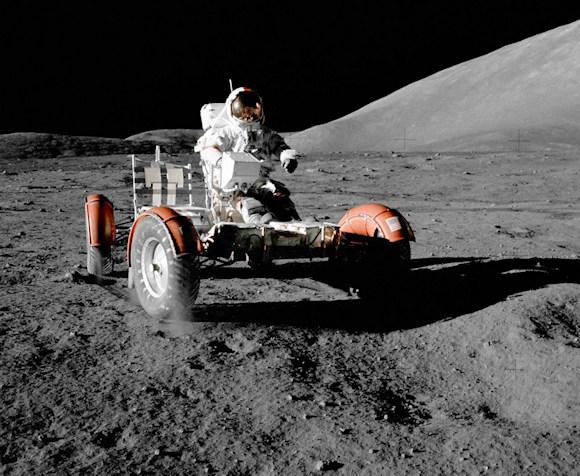From the wooden wheel for buggies, wagons and carriages to the wooden wheel but rubberized, to the solid tires like the Bersaglieri bikes, to those filled with foam up to the tire with an inner tube and then Tubeless, tubeless and much safer. The interesting story of the wheel starts in distant times. In Mesopotamia (source Pirelli) some remains were found composed of different wooden segments dating back to about 2500 BC. It seems they were able to rotate independently of the axes and turn, thus fulfilling the task of the differential. Professor Richard Bulliet (Columbia University) in his work: The Wheel: Inventions and Reinventions, claims that the finds even descend from earlier specimens dating back to 4.000 BC
Rubber wheels
Since then the wheel made a lot of progress, but it was Charles Goodyear on June 15, 1844 who patented vulcanized rubber, the progenitor of the modern tire.
The moderns Tubeless tubeless were invented by New Zealander Edward Brice Killen in 1929, but it was Michelin who produced them in 1955. Today they represent the finest in the field of safety and mobility. off road and military. In fact, it tends to deflate very slowly in the event of a puncture, it is lighter, more precise and waterproof and there is no friction with the inner tube in case of insufficient pressure.
The alternative to air for filling is nitrogen, an inert gas that totally eliminates humidity and reduces the formation of rust on the metal bands of the tire, improving its sporting performance and longevity.
Michelin and military vehicles
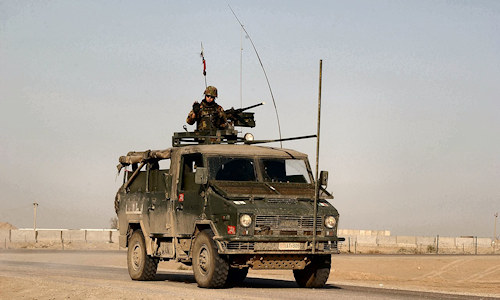 The French multinational has a historical relationship with our armed forces, at least since the 80s (a period on which I can personally testify). Both the AR76, ACM80 / 90, ATC81 VM90 etc reconnaissance car were fitted with Michelin tires with the characteristic knobbly pattern suitable for both asphalt and dirt, but a little less on wet asphalt.
The French multinational has a historical relationship with our armed forces, at least since the 80s (a period on which I can personally testify). Both the AR76, ACM80 / 90, ATC81 VM90 etc reconnaissance car were fitted with Michelin tires with the characteristic knobbly pattern suitable for both asphalt and dirt, but a little less on wet asphalt.
to MichelinProfessional is a brand specialized in the civil and military heavy line with measures, approvals and characteristics that still today allow to equip the modern ACTL, VTLM, VTMM as well as the SuperAV Land 8x8, VBM armored vehicles Arrow e Centaur. An improvement in the tires for armored vehicles has been the inclusion of an internal bulletproof cavity that avoids the collapse and bead breaking from the rim, maintaining appreciable driving conditions necessary for the removal of the vehicle from the fire area.
Military tires for tactical / logistic vehicles provide for connection with the CTIS pneumo-centralized system, Central tire inflation system which allows, with a command from the cabin, inflation / deflation for the most difficult passages. In fact, a different inflation pressure, in this case lower, increases the footprint surface and therefore the copying of the ground.
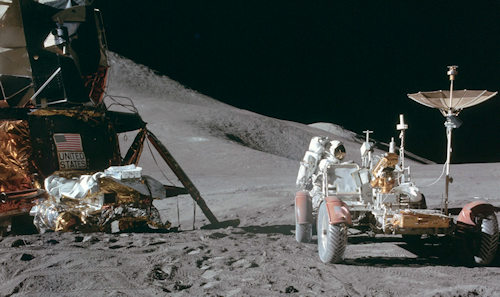 The idea starts from the MOON
The idea starts from the MOON
The term "pneumo" in itself leads us back to air while the adjective pneumatic has come into use for a conventional simplification. It will be 2024 the year in which they can optionally be placed on the market for tires without air or rather, with the air passing through. Nothing strange indeed a concept already experimented in the military and even before on the Moon.
We are talking about tires airless this is the real name, a revolution that basically appears with only one advantage, punctures are no longer a problem. During the Apollo mission to the lunar surface, a Rover technically called LRV was used Lunar Roving Vehicle. A small electric off-road vehicle that, in the absence of an atmosphere and with a gravity different from the Earth, had to navigate an unknown rocky / sandy terrain. NASA's LRV adopted wheels with an airless-like concept and was replicated on "Perseverance", the radio-controlled Earth Rover currently working on Mars.
As did
It is also known by the name of NPT, No Pneumatic Tire and it is a carcass with the same measures as traditional tires formed by a flexible and sturdy internal structure with honeycomb or spoked shapes, built with thermoplastic polymers and fiberglass.
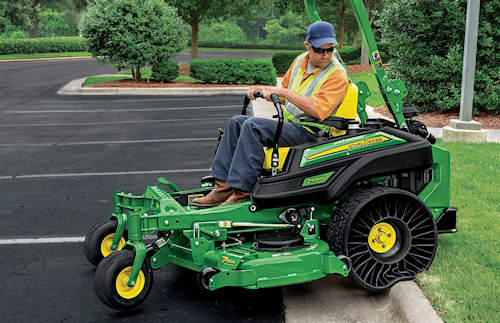
The central part that is tightened to the hub of the axle is substantially unchanged and metal or alloy.
The rubber rolling surface faithfully reproduces the design of conventional treads and among the advantages there is greater load resistance (which, however, makes it more rigid), greater longevity and substantial heat dissipation than, instead, with current " covered ”, can generate explosions.
It is not clear if theairless it is lighter than a traditional tire since there are empty pass-through spaces instead of the intersections of metal sheets and filaments immersed in the shoulders. The fact is that it can already be seen on some construction machines, bicycles and lawn mowers.
From what we learn, he would have problems to investigate, such as vibrations at speeds above 80 km / h and stability. L'off road it occurs at much slower speeds.
Militarily
Having the possibility of a long-lived wheel that does not puncture makes it clear that airless they have the credentials to be defined also bulletproof. However, it is necessary to understand how the structure would react under attack from a localized gust.
The US Army has gummed some Humvee with airless and the response seems positive also in light of a recent test in 2021.
Michelin has provided "Tweel" (name of specials airless) to be mounted on a Polaris MRZR vehicle for testing (photo) at the US Army Yuma Proving Ground and at the TRTC, Tropic Regions Test Center.
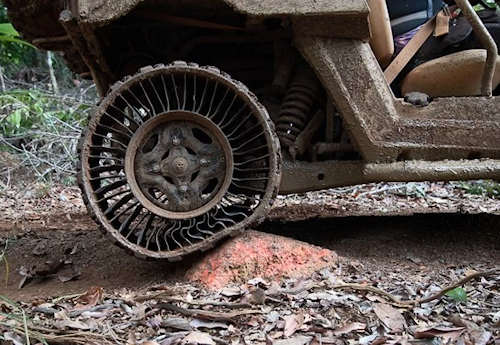
Carlos Mora, the test manager, seems satisfied at least in the heaviest use off road. He claims that there is also a reduction in weight due to the lack of the spare wheel, keys and jack and the vehicle is more spacious, certainly, however, there is no need to worry about punctures.
If this principle were applied to the logistic tactics the CTIS centralized pneumatic system, Central tire inflation system would it be banned?
The ground contact surface of a traditional tire is really a few square centimeters if the pressure is optimal. Greater pressure decreases grip, therefore grip and the first perception that the steering and vehicle transmit to us is of rigidity, hypersensitivity and lightness. In reality it is unsafe and braking distances lengthen making the vehicle unstable even when cornering. However in certain circumstances of theoff road, it is important to increase the contact surface. Therefore a partial deflation is part of very precise techniques to exploit the torque characteristics of the vehicle: a 100% slope on unstable ground and so on ...
Photo: NASA / web / Deere & Company / US Army

